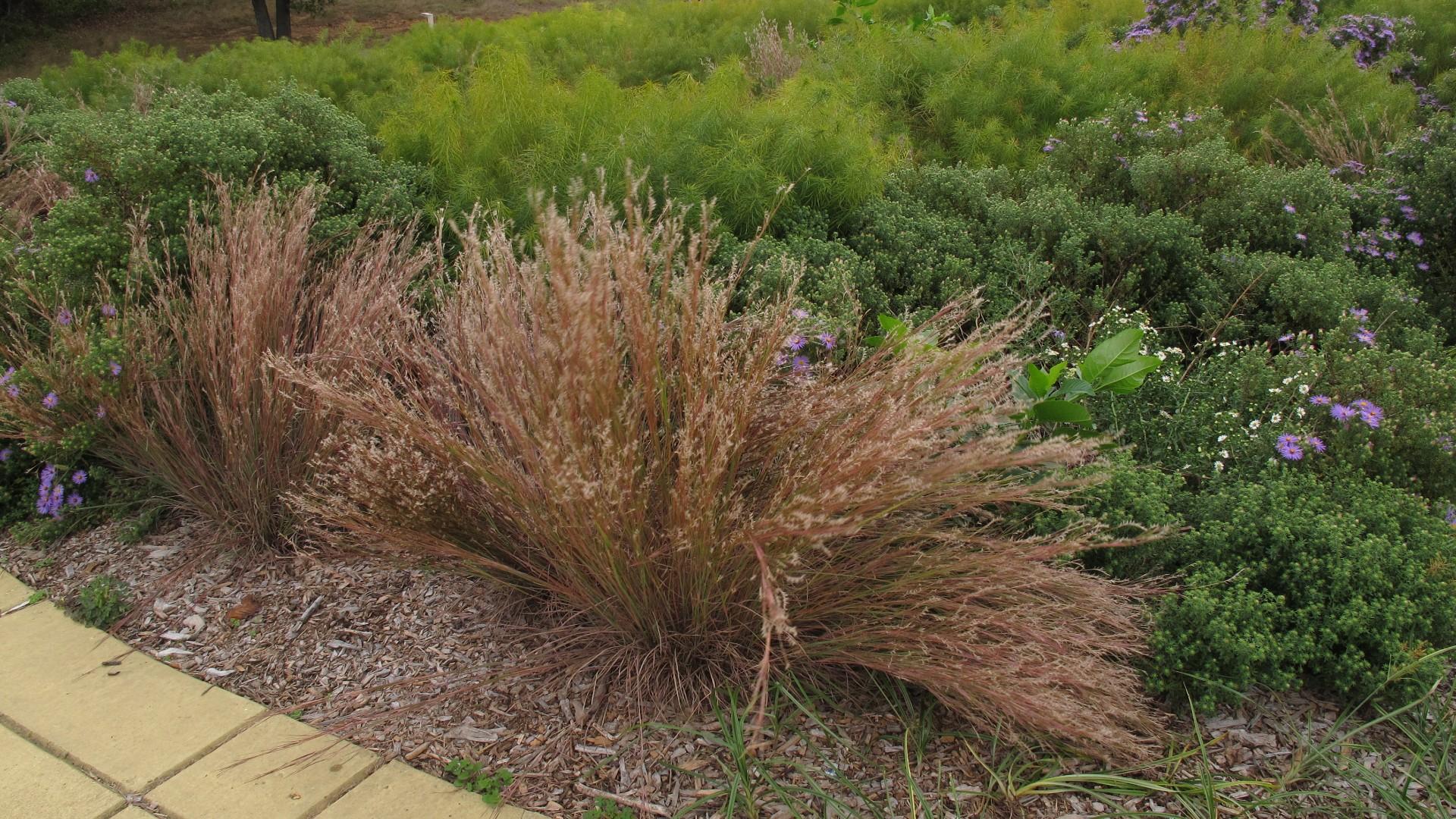About little bluestem
Schizachyrium scoparium (formerly Andropogon scoparius)
Graminoid
Grass Family
Maryland Distribution: Dry areas with poor soil, sunny meadows, woodland edges. Throughout the state.
Height: 1.5-3 feet
Blooms: Silky seeds emerge in fall
Sun: Full sun
Soil: Dry, poor soil of any texture
Garden Use & Maintenance: Clumping, perennial warm season grass. Use as an ornamental specimen, or for massing, native meadows, erosion control, and as a pasture grass. Particularly effective in large plantings where the graceful stems move in harmony on windy days, forming ripples across the landscape. Contrasts nicely with hard structures (modern architecture, statues). Particularly attractive in fall when the silvery chains of seed emerge, and the whole plant takes on a rusty-brown fall color. Garden specimens can be trimmed back in late spring if desired.
Wildlife: During snow storms the clumps of little bluestem arch over, providing small shelters very popular with song sparrows, white-throated sparrows, and other overwintering birds. When the snow melts, the grasses stand upright again. Seeds are an important food source for song birds and bobwhite quail. Little bluestem is a hostplant for several species of insects, especially skipper butterflies.
Deer proof
